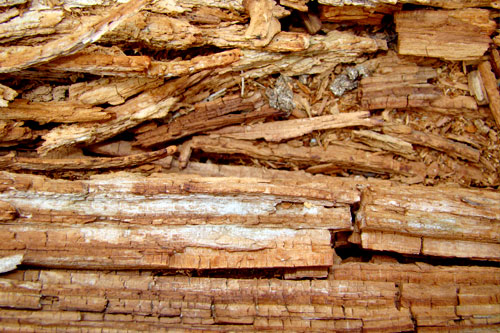How Much Does It Cost To Remove Dry Rot?

Cost To Remove Dry Rot
Job | Description | Labour |
| 1 | Completely remove dry rot under from the kitchen floor. This will require the whole floor and every bit of kitchen to be removed (and dumped). The oversite and walls will then need treating and the whole lot completely reinstated. It’s an insurance job! The minimum cost around… | £3250 |
“Labour” at £175 a day (tradesman) £100 (labourer), includes incidental fixings etc. and tipping charges. “Materials” if mentioned, are larger things (a boiler) and stuff only you can choose (tiles etc). Also, VAT must be added all round.
Information Sheet on the Cost to Remove Dry Rot
Serpula Lacrymans is about the nearest to an alien life form that we householders are likely to find. It slowly creeps through several dark and silent manifestations. As it’s a very secretive organism, it favours dark, damp, stagnant conditions until it develops its horrible “fruiting body” and finally emerges. You will reach frantically to be beamed up by your transporter if it starts throbbing.
So…What exactly is Dry Rot?
The following description of dry rot’s development sounds like a horrible curse conjured up by some Victorian bible thumping evangelist to inflict on his flock after a bout of serious sinning.
“The wood shrinks, darkens and cracks in a cuboidal manner which is typical of ‘brown’ rot damage. A silky grey to mushroom coloured skin, frequently tinged with patches of lilac and yellow colouration, develops under less humid conditions. This ‘skin’ can be peeled like a mushroom. Eventually, white fluffy cotton wool-like mycelium develops under humid conditions. Sometimes ‘teardrops’ may develop on the growth. Strands develop in the mycelium; these are brittle when dry, and crack on bending. The fruiting body, a soft fleshy pancake or bracket with an orange ochre surface with wide pores will develop. Rust red coloured spore dust, frequently seen around fruiting bodies, develops. Active decay produces a musty, damp odour”.
Yup, that just about covers it…and dry rot!
How can it be dry if it needs water?
You need to know here that “dry” rot actually needs water to thrive, that it physically eats your wood, that it can travel across and through materials other than wood and that, even when supposedly eradicated, given the right conditions it can remain dormant for up to ten years.
So, with all this beastliness festering under your floorboards, what you don’t want is a bunch of amateurs trying to sort it out. Do your homework in order to be certain the mob you choose know exactly what they are doing.
The proper process should include all of the following, with particular attention to the first process. Once again, a specialist eradication company should follow these recommendations and ‘lift’ the infestations from the site. We’re “all-rounders” here, so we know when we’re beaten!
1. Locate and rectify the source of water causing and maintaining the rot.
2. Promote and maintain rapid drying conditions.
3. Remove infected wood: the removal of the food source will stop the spread of growth relatively quickly.
4. Reinstate using pre-treated timber (double vacuum / pressure impregnated as appropriate), or use inert materials such as concrete, steel, etc. Consideration should also be given to the use of preservatives for steeping joist ends prior to reinstatement.
5. Employ spatial and physical isolation: for example, reinstate timbers using joist hangers and joinery wrap. These deny the fungus a potential food source and they also prevent timbers from becoming wet.
6. Apply fungicidal renderings and paints. They create chemical barriers through the use of zinc oxychloride (ZOC).
7. Sterilise any masonry: this involves the application of a special water based fungicide.
One last point, the company that eradicates the rot should also replace the timbers and complete the job. That way there can be no “split responsibility” issues, if problems arise.
FAQs 'traffic light' guide
-
What's easy about this job…
Open or CloseABSOLUTELY NOTHING!!
-
What's tricky about this job…
Open or CloseGetting the RIGHT firm in. Do your research!
-
Potential problems with regards to this job…
Open or CloseIt is impossible to determine how far the rot has spread until your floors are lifted. The job can grow and grow, as can the bill.
www.buildingsheriff.com
Copyright The Building Sheriff Ltd 2017